Pickup or no pickup? Additional features and differences between acoustic guitars
Pickups
To allow their acoustic sound to be electrically amplified, many acoustic guitars are equipped with a pickup system. The most commonly used solution here is the piezoelectric pickup, which is usually placed under the bridge saddle. A preamp system, which often includes an onboard tuner and a set of EQ controls for fine-tuning the sound, is additionally built into the body of the guitar to amplify the signal coming from the pickup. The resulting signal is then sent to an acoustic guitar amplifier or PA system. Players who plan to use their acoustic guitar within the framework of a band should therefore opt for a model with a pickup system from the start - though such systems can of course also be retrofitted.
Woods
Spruce, cedar, and mahogany have all established themselves as popular woods for acoustic guitar tops, while mahogany and rosewood are frequently used for the bodies. Manufacturers frequently opt for mahogany as a wood for making the necks, with ebony and rosewood often used for the fingerboards. At the same time of course, many other woods with similar tonal characteristics are also used in the building of acoustic guitars. A sign of good quality is the use of solid woods, which are therefore standard for higher-priced instruments, while guitars in the lower price brackets are often made from laminated wood which nonetheless delivers a respectable sound.
Cutaway
A cutaway is an indentation in the body of the guitar which is adjacent to the neck joint and gives the player's fretting hand better access to the upper registers of the fingerboard. Electric guitars generally feature one or two cutaways above and below the neck, while traditional steel acoustic guitars are constructed without a cutaway. Acoustic guitars with a cutaway are of course the best choice for players who frequently include solo passages in their repertoire.
Bracing
The term "bracing" refers to a pattern of wooden struts on the underside of an acoustic guitar's top, which counteract the tension of the strings and transfer their vibration to the body of the instrument. Steel acoustic and classical guitars are always constructed with bracing, as the string tension would otherwise cause the guitar's top to bulge. Steel acoustic guitars most frequently feature so-called "X-bracing", which was developed around 1850 by Christian Friedrich Martin and has been successively refined ever since. A variation of this system, known as "scalloped X-bracing", features braces that are carved into a symmetrically curved pattern towards their centre, and this also has an effect on the guitar's tone. Which type of bracing players prefer is of course down to their individual taste.
Important acoustic guitar accessories
Acoustic guitars can be played with the fingers or with a plectrum, which is an essential accessory when strumming chords, i.e. playing several strings at once, as an accompaniment to vocals and other instruments. Plectrums are available in a range of different materials, shapes, and thicknesses, so players should definitely experiment and find what works best for them. Medium-gauge plectrums are probably the best choice for beginners playing strumming-based styles, while heavier gauges lend themselves particularly well to playing solos and melodies.
Strings
Steel acoustic guitars are generally strung with heavier-gauge strings than electric guitars.
Many guitars are shipped with .012 - .053 strings, though the gauges of the three bass strings can vary slightly. The numerical values assigned to the gauges in a set of strings refer to the thickness in inches of the top and bottom strings, respectively - in the example above, for instance, the high E-string is 0.012 inches thick, the bottom string 0.053 inches. Guitarists who are looking for a slightly softer playing feel can try a set of .011 - .052 strings. Coated strings have also been a popular choice among steel acoustic players for some time, since they are less sensitive to external factors such as sweat and also last significantly longer.
Capo
A capo is a device that is attached to the fingerboard of a guitar or other stringed instrument in order to raise the pitch of the strings. This works by clamping the strings between two frets, allowing open chord voicings to be played in a higher key, which makes a capo an essential part of any acoustic player's arsenal and an accessory that no guitar case should be without.
Acoustic guitar amplifier
Acoustic amplifiers are specifically designed for use with acoustic guitars that have a pickup system, and are optimised for the linear frequency response of steel acoustic and classical guitars. What is more, many acoustic amps come equipped with some of the most commonly found modulation effects as well as a microphone connection, and thus give the player a compact PA system for amplifying their instrument and voice at the same time.
Strap
In contrast to classical guitars, steel acoustic guitars (like their electric counterparts) can also be played standing up. Some acoustic guitars come equipped with only one strap button on the bottom edge, since the placement of the upper strap button in relation to the guitar's neck affects the instrument's weight distribution. For this reason, it may be necessary to retrofit a second one - if desired, this can also be carried out at Thomann's workshop right after purchase. Straps are available in various designs and materials, including leather and nylon, as well as vegan alternatives.

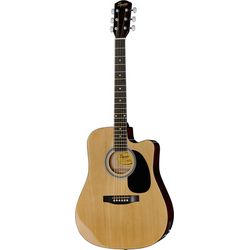
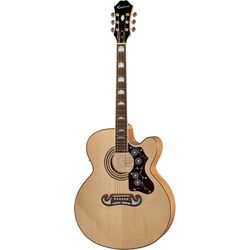

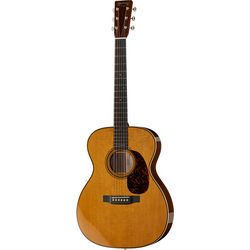
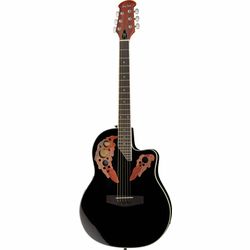
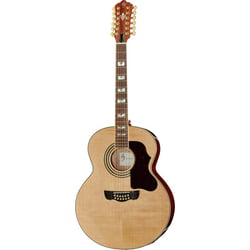

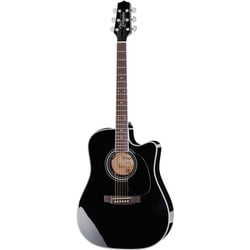
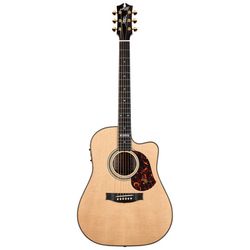
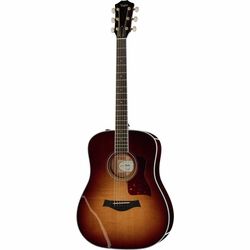
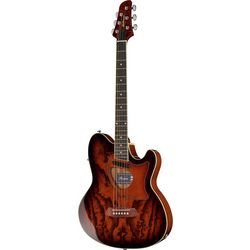
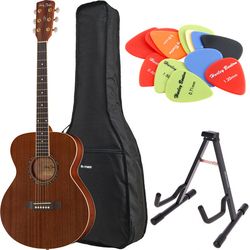


)
)